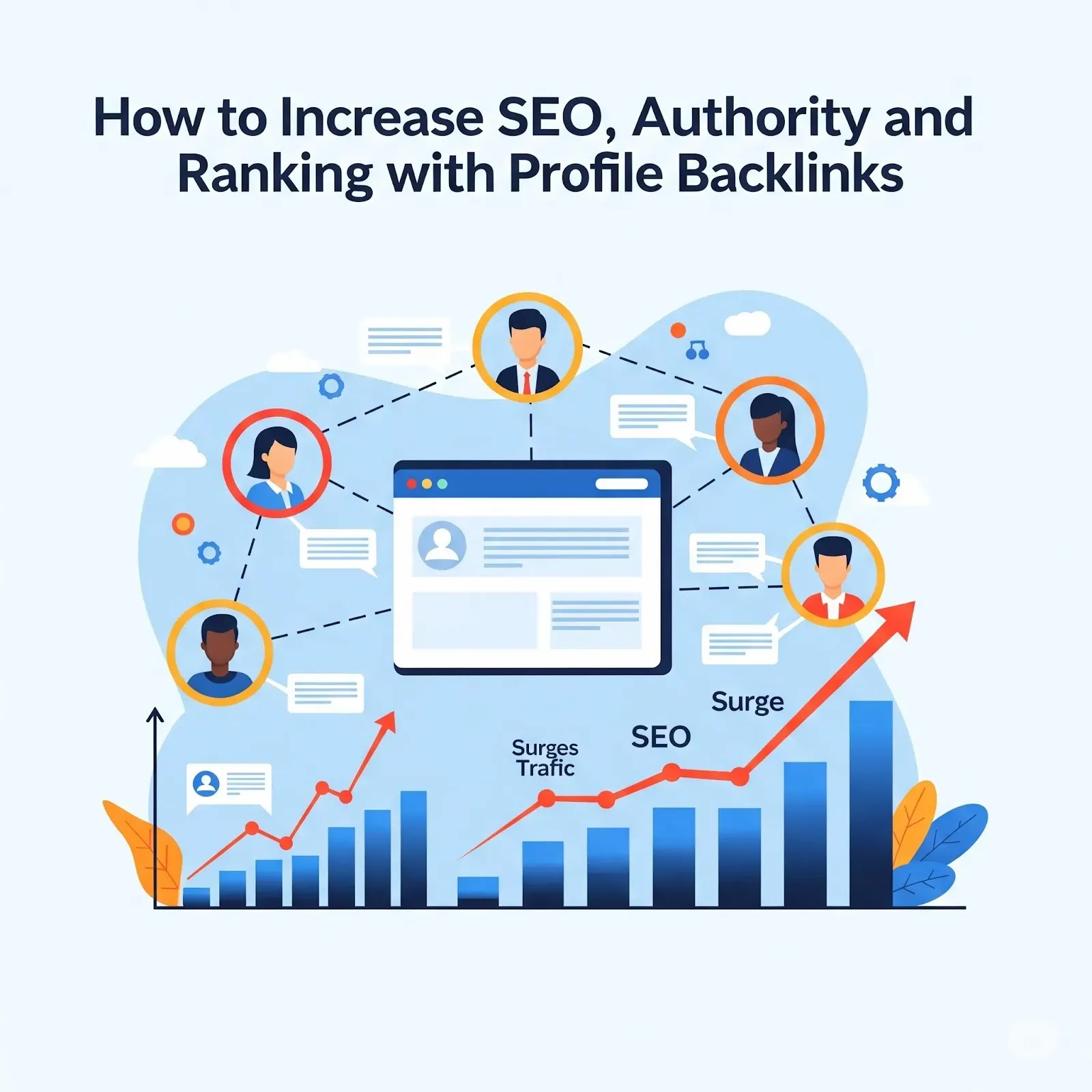In the competitive digital landscape, search engine optimization (SEO) plays a crucial role in driving organic traffic. One of the most effective ways to boost website authority and ranking is by leveraging profile backlinks. These backlinks, when utilized strategically, can enhance domain trust, credibility, and overall SEO performance.
What Are Profile Backlinks?
Profile backlinks are links that originate from user profiles on various platforms, such as forums, social media networks, web directories, and business listing websites. When you create a profile on these platforms and include your website link, search engines recognize these as legitimate backlinks.
Why Profile Backlinks Matter for SEO
Profile backlinks contribute significantly to domain authority and search rankings. Here’s why they are essential:
- Enhance Domain Trust – Search engines view links from reputable sites as a sign of credibility.
- Improve Link Diversity – A natural link profile includes diverse link sources, including profile backlinks.
- Boost Indexing Speed – Search engines discover new content faster when linked from authoritative sources.
- Increase Referral Traffic – Users browsing these platforms may click on your link, driving potential leads.
- Support Brand Visibility – The more platforms your brand appears on, the greater the exposure.
How to Build High-Quality Profile Backlinks
1. Identify Authoritative Platforms
Not all platforms provide equal value. Focus on websites with high domain authority (DA) and strong relevance to your industry. Examples include:
- Social media sites (LinkedIn, Twitter, Facebook)
- Business directories (Yelp, Crunchbase, AngelList)
- Forums and communities (Quora, Reddit, Stack Exchange)
- Educational and governmental platforms (.edu and .gov sites)
2. Create a Complete and Engaging Profile
A well-optimized profile should contain:
- Your full name or business name
- A compelling bio with keywords
- A professional profile picture or logo
- Links to your website and social media
- Relevant industry information
3. Use Natural and Relevant Anchor Text
Avoid spammy or over-optimized anchor texts. Instead, use brand name, URL variations, or contextual keywords that fit naturally into your profile description.
4. Engage with the Community
Building backlinks is not just about placing links—it’s about establishing authority. Engage with the platform by:
- Participating in discussions
- Answering queries with valuable insights
- Sharing useful content
- Providing recommendations or reviews
5. Monitor and Maintain Your Backlinks
Regularly check your backlink profile using SEO tools like Ahrefs, Moz, or SEMrush. Remove any broken links and update your profile details to keep them relevant.
Best Profile Backlink Platforms by Category
1. Social Media Networks
2. Business Directories
- Yelp
- Crunchbase
- AngelList
- Better Business Bureau (BBB)
3. Industry-Specific Platforms
- GitHub (for developers)
- Behance (for designers)
- SoundCloud (for musicians)
- Goodreads (for authors)
4. Question & Answer Websites
- Quora
- Stack Overflow
- Yahoo Answers (legacy reference)
Common Mistakes to Avoid
1. Using Spammy Platforms
Avoid low-quality directories or forums that engage in link farming, as they can harm your SEO efforts.
2. Over-Optimized Anchor Texts
Search engines may penalize sites for using the same anchor text excessively. Diversify your anchor text for natural linking.
3. Creating Profiles Without Engagement
Simply placing a backlink is not enough. Active engagement enhances credibility and authority.
4. Ignoring Link Health
Regularly audit your backlinks to ensure they remain active and relevant.
Conclusion
Profile backlinks are a powerful yet often underutilized SEO strategy. When implemented correctly, they can significantly boost your website’s authority, search engine rankings, and traffic. By focusing on high-quality platforms, optimizing profiles, and engaging with communities, businesses can harness the true potential of profile backlinks.






.png)









No comments